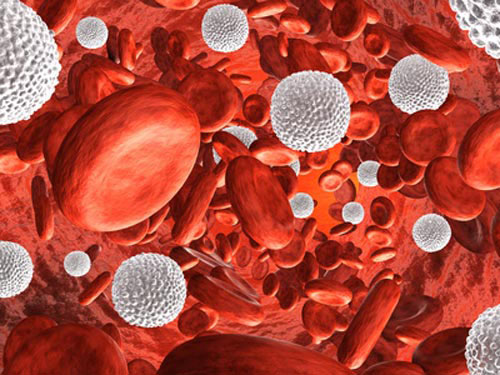Multiple myeloma (MM) is a cancer that forms in a type of white blood cell called a plasma cell. Healthy plasma cells help you fight infections by making antibodies that recognize and attack germs. In multiple myeloma, cancerous plasma cells accumulate in the bone marrow and crowd out healthy blood cells. Now, researchers at Mount Sinai report they have developed a new model to identify specific genes and genetic alterations responsible for never-before-defined subtypes of multiple myeloma.
Their findings are reported in the journal Science Advances in a paper titled, “Patient similarity network of newly diagnosed multiple myeloma identifies patient subgroups with distinct genetic features and clinical implications.”
“The remarkable genetic heterogeneity of multiple myeloma poses a substantial challenge for proper prognostication and clinical management of patients,” the researchers wrote. “Here, we introduce MM-PSN, the first multiomics patient similarity network of myeloma. MM-PSN enabled accurate dissection of the genetic and molecular landscape of the disease and determined 12 distinct subgroups defined by five data types generated from genomic and transcriptomic profiling of 655 patients.”
“Our findings have immediate implications for the development of novel precision medicine tools and clinical trials, as different subgroups of patients may respond to different targeted and immuno-oncology therapies based on their genomic and transcriptomic profiles,” explained lead author Alessandro Lagana, PhD, assistant professor of oncological sciences at the Tisch Cancer Institute at Mount Sinai. “These studies are fundamental to advancing our understanding of myeloma pathology and pave the way for future research into drug repurposing approaches aimed at novel therapies tailored to specific patient subgroups.”
To create MM-PSN, researchers analyzed five different types of data obtained from DNA and RNA sequencing of 655 newly diagnosed multiple myeloma patients. The analysis of MM-PSN identified three main groups and 12 subgroups enriched for distinct genetic and molecular features, revealing diversity within previously defined disease subtypes—such as hyperdiploid and MMSET-translocated, which are chromosome abnormalities—and novel insights into the occurrence of primary and secondary genomic alterations within each patient’s cancer.
The researchers also identified new classes of high-risk patients beyond current classifications in multiple myeloma, including one for those patients at highest risk of relapse and shortest overall survival, and another that is often associated with more favorable outcomes.
“These studies are fundamental to advance our understanding of MM pathology and pave the way for future research into drug repurposing approaches aimed at novel therapies tailored to specific patient subgroups,” concluded the researchers.


